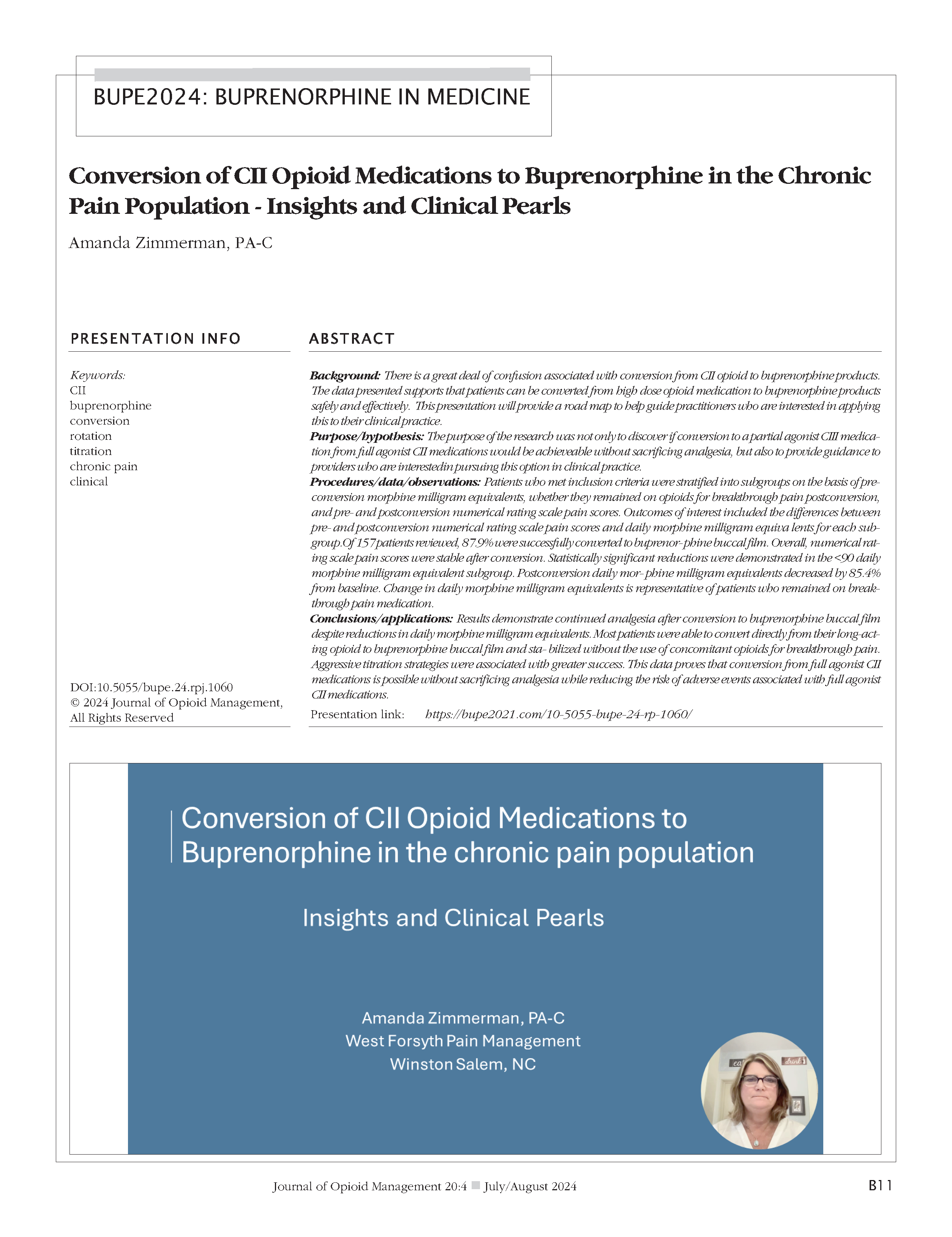Conversion of CII Opioid Medications to Buprenorphine in the Chronic Pain Population - Insights and Clinical Pearls
DOI:
https://doi.org/10.5055/bupe.24.rpj.1060Keywords:
CII, buprenorphine, conversion, rotation, titration, chronic pain, clinicalAbstract
Background: There is a great deal of confusion associated with conversion from CII opioid to buprenorphine products. The data presented supports that patients can be converted from high dose opioid medication to buprenorphine products safely and effectively. This presentation will provide a road map to help guide practitioners who are interested in applying this to their clinical practice.
Purpose/hypothesis: The purpose of the research was not only to discover if conversion to a partial agonist CIII medication from full agonist CII medications would be achieveable without sacrificing analgesia, but also to provide guidance to providers who are interested in pursuing this option in clinical practice.
Procedures/data/observations: Patients who met inclusion criteria were stratified into subgroups on the basis of preconversion morphine milligram equivalents, whether they remained on opioids for breakthrough pain post-conversion, and pre- and post-conversion numerical rating scale pain scores. Outcomes of interest included the differences between pre- and post-conversion numerical rating scale pain scores and daily morphine milligram equivalents for each subgroup. Of 157 patients reviewed, 87.9% were successfully converted to buprenorphine buccal film. Overall, numerical rating scale pain scores were stable after conversion. Statistically significant reductions were demonstrated in the <90 daily morphine milligram equivalent subgroup. Post-conversion daily morphine milligram equivalents decreased by 85.4% from baseline. Change in daily morphine milligram equivalents is representative of patients who remained on breakthrough pain medication.
Conclusions/applications: Results demonstrate continued analgesia after conversion to buprenorphine buccal film despite reductions in daily morphine milligram equivalents. Most patients were able to convert directly from their long-acting opioid to buprenorphine buccal film and sta- bilized without the use of concomitant opioids for breakthrough pain. Aggressive titration strategies were associated with greater success. This data proves that conversion from full agonist CII medications is possible without sacrificing analgesia while reducing the risk of adverse events associated with full agonist CII medications.

Downloads
Published
How to Cite
Issue
Section
License
Copyright 2005-2025, Weston Medical Publishing, LLC and Journal of Opioid Management. All Rights Reserved.










